Hưng Yên
I know Hung Yen is the largest rice area of the North, I visit Hung Yen because it is my girlfriend's hometown. Although the trip was only a day but Hung Yen not only gives me the opportunity to explore the historic buildings but also the opportunity for me to admire the beauty of bold village. home to the fragrance of rice.
Hung Yen is located in the central area of the Red River Delta, Hung Yen is a lowland interbedded plain. Although there are no wild features of the mountains or the blue beaches with white sand stretches but Hung Yen owns the buildings are extremely unique and of great historical value.
To discover all the interesting places around the cultural values of this land, I will share some of the following Hung Yen travel experiences that will be essential for travelers' journey.
So when should you come to Hung Yen?
Except for the rainy season (from April to October), it is time to limit to Hung Yen. For the remaining months, I find Hung Yen quite beautiful and has many attractive festivals such as Mau temple festival, The festival of Da, Da Hoa temple, Da Trach temple... for visitors to attend and worship.
How to move to Hung Yen?
The distance from Hanoi to Hung Yen is about 40km. This is a fairly close distance and is perfectly suited for visitors making a short ride by motorbike or private car during the weekend.

Highway 5A - Hưng Yên city welcome gate!
I follow straight along Highway 5A, I will arrive in Hung Yen in one hour. However, there are many trucks on Highway 5A so travelers should be very careful when traveling on this route.
If you are not sure about the safety level when traveling by private means, I recommend that you can also easily get to Hung Yen by catching a bus from Hanoi to Hung Yen at Luong Yen. The bus operates at a frequency of 20 minutes / trip, operating time from 5h to 22h, you should note to plan go and on reasonable.
Central Square of Hưng Yên
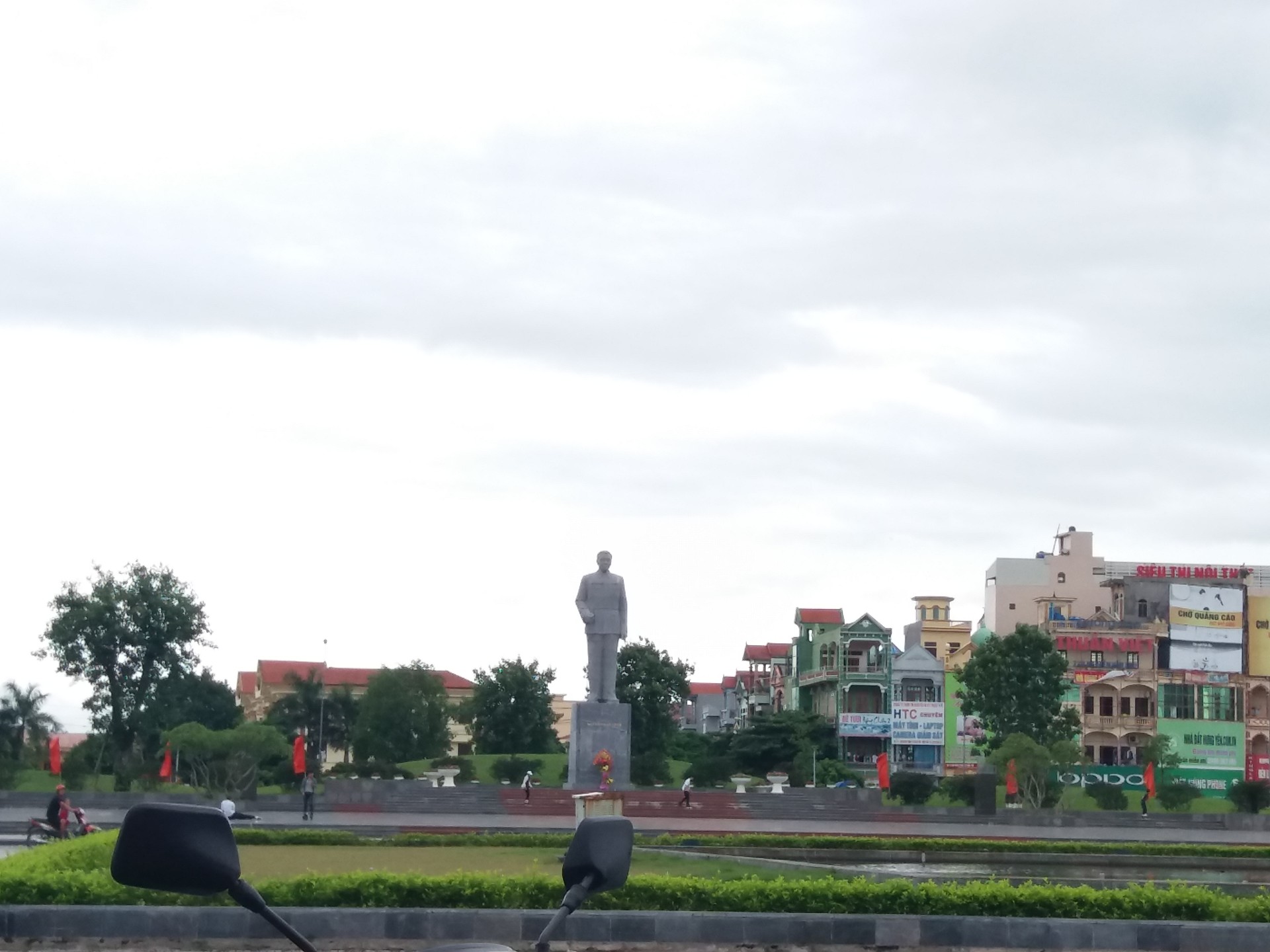
The first place I visited, actually I encountered is the central square Hung Yen, in the middle of the monument Mr. Nguyen Van Linh.
I will tell you a bit about the history of Vietnam during the communist era, after winning the struggle with the United States, Vietnam fell into a severe economic crisis, the communist economy like North Korea!
However, he was fortunate that the sixth National Party Congress (1986) elected him the General Secretary of the Communist Party of Vietnam. Nguyen Van Linh is one of the leaders of the Party who initiated the renewal process, abolished bureaucratic centralization, shifted to a multi-sector economy, operated under the market economy State-oriented socialist.
I learned that he had written and wrote many important pieces that shed light on the doctrine of innovation, especially those he had under the heading "Things to do now" under the pseudonym NVL. New life in the society: Democracy, openness, straightforwardness and truthfulness have the effect of promoting the various levels, branches and organizations to solve urgent problems in everyday life, Fighting against the negative creates a strong change in the minds and wings of each person.
Simply put, he was the one who had opened up the Vietnamese economy, moving from a communist state economy to a private, market economy!
That has helped Vietnam rise, avoid dictatorship such as North Korea.
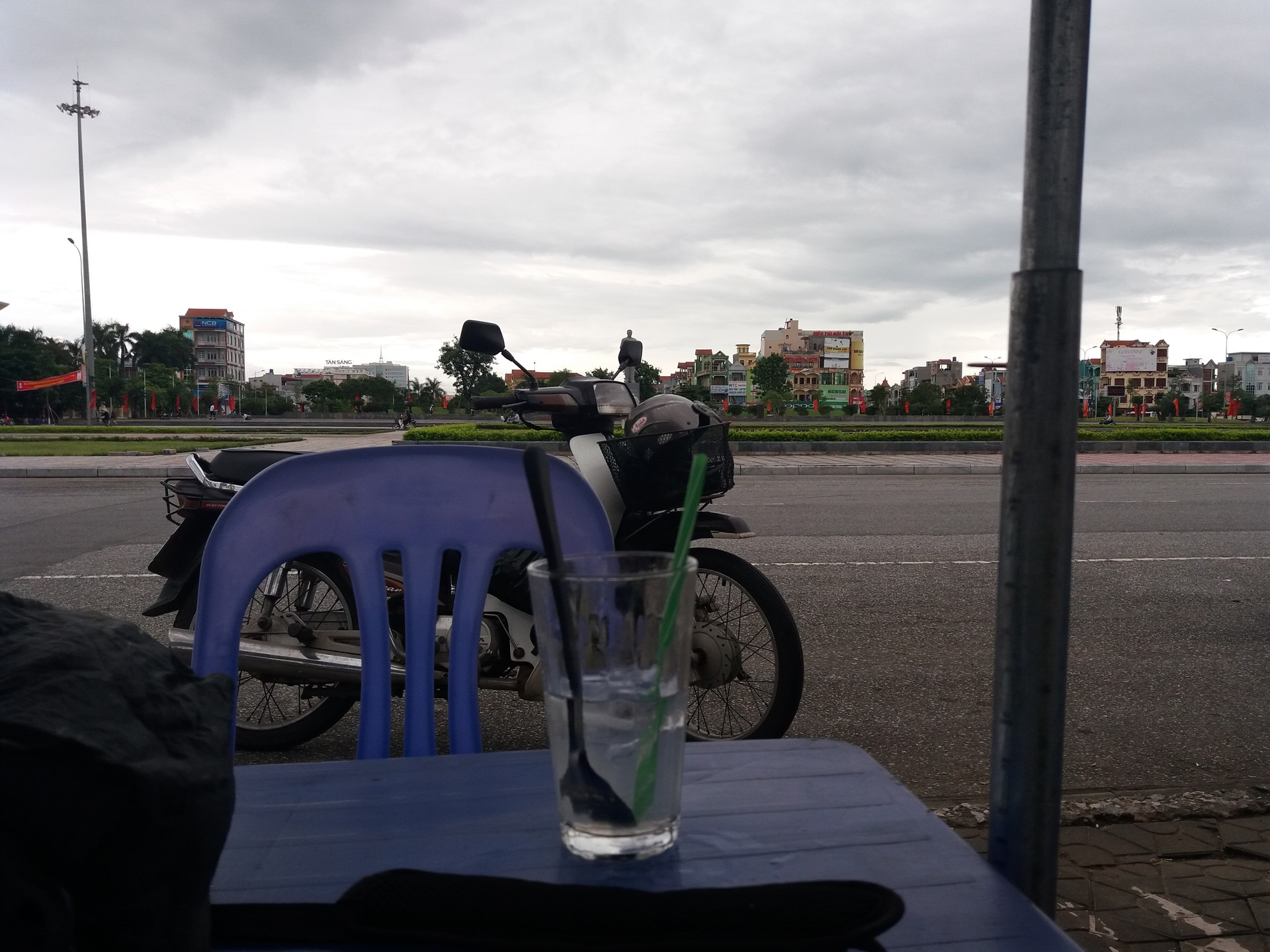
I sit right in front of his statue in the square, the place is quite large place where the program of cultural and artistic events of Hung Yen province.
Wait a minute, Minh Anh arrived and we went to visit Hung Yen city.
Temple of Literature Xich Dang
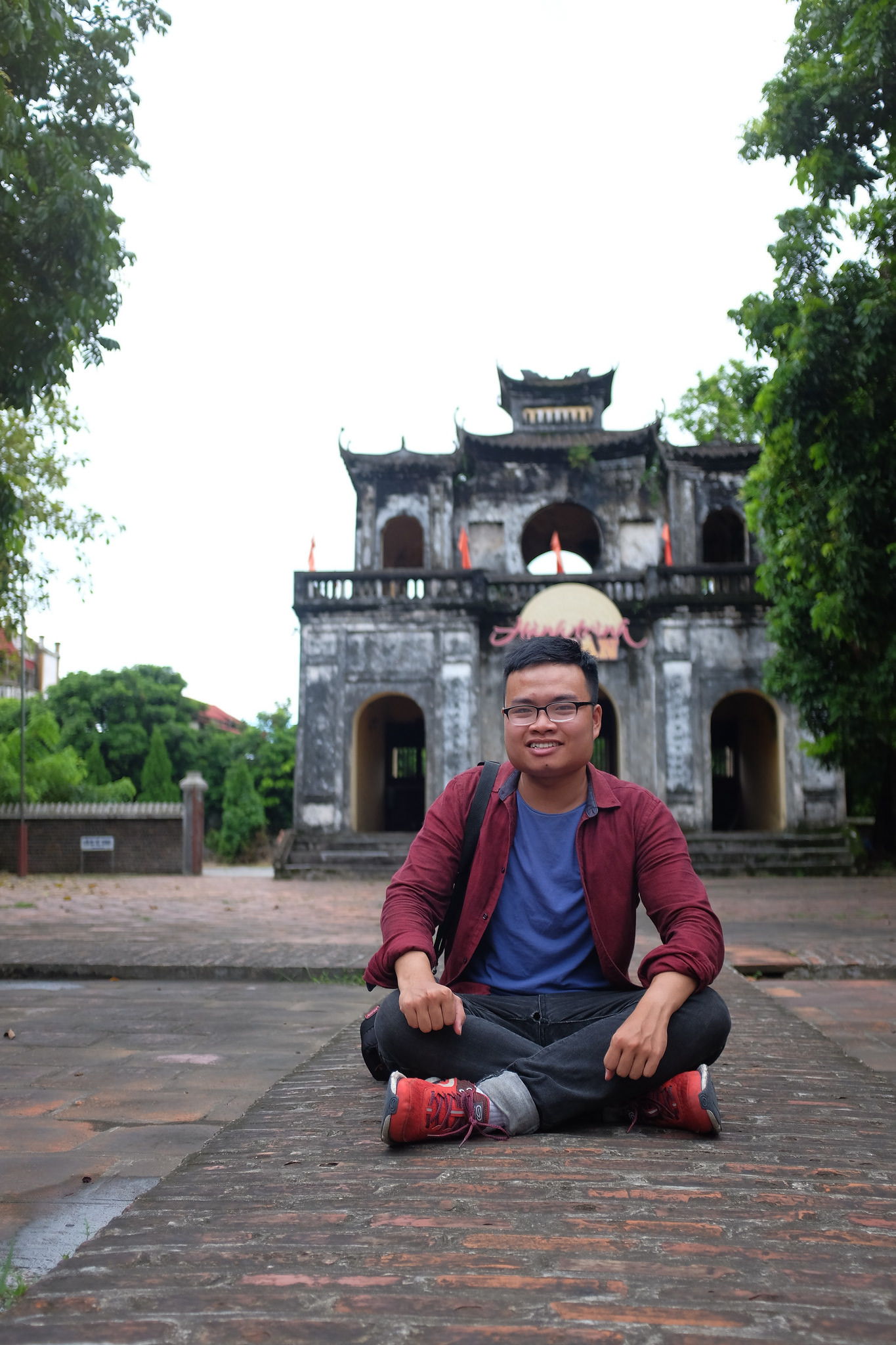
The first point we visit is Van Mien Xich Dang, which borders the Red River all year round, alluvial red in the city of Hung Yen, Xich Dang Temple, also known as Hung Yen Temple, is a relic. important in the population of Pho Hien relic group. The temple was built in 1832, underwent nearly 400 years of existence and registered 161 graduates of the University of the Upper Son Nam, literature has become a symbol of the tradition of learning the land of the land. Pho Hien, the second Pho Hien.
Although located in the residential area, but right on Yen Lenh Bridge, on Highway 38 linking Ha Nam with Hung Yen we can see the Xich Dang Temple from two hundred years old rice planted in front of the gate.
We found on the entrance there are statues of two large Ghê- Dragon Dog stone carved from the eighteenth century. The three-way gate, also known as the gate of the clinic, is one of the buildings that preserve the unique architecture of the remaining temples in Vietnam. Built in the style of husband-in-law, two-storeyed eight-story roof. The two sides of the Three Gate have two speakers, used to nominate the disciple and announce the rules in the incense.
The front of the capital of the internal capital
Temple of Literature Xichdang structure in the style of Tam writing: including currency, Chinese and post-graduation. The roof system is structured in a "real estate" style, with the main facing south. Inside the interior of the self-shining with the system of letters, structure, the door sill and a system of pillars is painted gold lacquer covered with metal completely. The most valuable artifacts in the temple still preserved today are the nine inscribed stone stele, the hometown, the position of 161 delegates in the ancient Son Nam town, of which 138 are in Hung Yen and 23 in Thai Binh.
I used to visit the Temple of Literature in Hanoi, instead of the empty floor as in the literature temple of Hanoi, Mao Dien Temple, in the Temple of the Xichang floating floor was replaced by the bell tower. The bells and chants resounded at the signal that the exam was over and over, and it was also a cry of gratitude and gratitude to the sages of the festival.
Two bells and shrines of the temple are also ancient artifacts that were cast and built in the 18th century. Inside the gate there is a large courtyard, in the middle of the courtyard is the crossroads, the two sides of the courtyard has a bell tower and floor with two lines of description vu vu, property. These two rows are now used to display educational images and objects of Hung Yen province
Then we went inside the shrine, inside the teacher was a teacher in the school, it was a famous teacher of Vietnam in the past, and in the same worship Confucius.
Next we have some pictures taken in the courtyard.
Then we walked 1.5 km to the Temple of the Golden Bell..
The temple is located in Hien Nam ward, golden bell temple was built from the Le (XV century). Through many renovations, embellishment, the pagoda retains the architectural style of post-Le Dynasty (17th century).
The temple is also called Kim Chung Tu (Temple of the Golden Bell) by attaching to an ancient legend.
Legend has it, in one lunar year, there is a yellow bell on an unknown raft from which has drifted into the waterfront of Nhan Duc village. The race to pull the bell to their local but not, so the old man in the village praised the Buddha teaching the ten young men and women pull the bell to the shore. Cho is a treasure of heaven, villagers Nhan Duc contributed to the work, rebuild the temple for more spacious and built the bell hanging. Every time the bell rings, the bell rang tens of thousands of miles away. At that time, the king of the North feared that whenever the bell rang, the treasures they robbed would return to their former masters, pretending to be high up to the temple to steal the golden bell.
Knowing the heart to robbery the golden bell, the monks decided to hide the golden bell on a small well. Gradually those who carry the bell are killed by the invaders, no one knows where the golden bell has been hiden.
At this point, we can see the beauty of the architectural architecture of the bell temple is in balance, rhythmic composition. The pagoda is arranged in a symmetrical way on an axis stretching from Tam Quan Gate to the Patriarchal House, the architecture of "Exterior Foreign Affairs" includes the special items such as: Tam Quan, Tien duong, Thuong duong, hut, stairs, two rows of vu vu, property, model.
I was impressed by the antiques and the patterns, architecture Le Post was marked clearly on the gate and the gate of Tam Quan. The three-storeyed 12-storeyed 3-storeyed mansion, harmonious appearance. The sacred lanterns embellish the sacred, stone stand to worship the sacred temple gate.
Through the three-way gate to the pond "eye dragon" planted lotus, in between the stone bridge was built in 1702. Through the gate and eye dragon ponds, visitors like to dust off the ceiling to go to the world of Buddha, human direction to the heart and good. Next is the path of the path, which is paved with green stones, the only way that leads beings to escape from suffering.Front House 5, 2 rooms, architectural style of the lotus son, traditional style 4 roof.Between the front hall and the Upper Hall, there is a courtyard, in the middle of which there is a stone incense burner set up in 1702, four pages showing the merits of the people renovating the temple.
The powerhouse also has 5 compartments, 2 pedestals, the same structure as the Prelude. Inside the Upper Palace there are many beautiful statues such as Tam The statue, Van Thuy, Pho Hien, Ngoc Hoang, Nam Cao, Bac Dau, Shakyamuni Buddha, Amitabha...
The two sides are symmetrical corridors leading each other to the Model House, the House and the steeple. Two corridors are arranged symmetrically to different classes of statues.
Also, I think that the special characteristic of the ancient temple that you cannot ignore is the unique system of Buddha statues. Most prominent is the bowl of Diamond, Arhat Bat (18 Arhat), four statues Bodhisattva, two French households running along the two corridors. The statues are elaborately elaborate, each statue has a pose, own appearance and different expressions attracted the delight of many visitors.
The temple also has a wooden relief, which is the Shroud of the Pluto, depicts the humiliation that people have to experience in the precepts of the world, advise each person to know the moral, more virtue.
Dat Dong Temple

I saw the temple on a spacious land, high in the middle of the village of Datong, Dai Dong, Van Lam. Communion of Tam Giang, a general with great merits to help Hai Ba Trung kill the enemy.
According to the legend, it was kept at the communal house: in the Western Han Dynasty in Van Muc, Bac Giang had a girl named Tinh, who was a beautiful, Husband, a Buddhist followers should voluntarily ask the abbot in the temple to early afternoon light incense worship. One day Ms. Jing came to the banks of the Nguyet Duc River for a shower and suddenly the sky began to rumble, the wind came rumbling, and then a streamer emerged on her, she panic ran to the temple, She lay asleep in front of the altar, to the third, in the dream she found herself swallowing the moon in her stomach, she woke up from there she was pregnant. On 10-2 in the year of the Dragon, she gave birth to a son, a natural figure who is different from ordinary people, and immediately named Tam Giang.
He is a talented general, a talented martial arts master who has made great contributions to fighting the enemy, rescuing the country, saving the people and being recognized as the "Phuc Nu Pho". Not only that, he also has public to Dong Cau, today this area is the village of Datong.
After his death in commemoration of his great merit, the people here have made him holy.
Moreover, the thing that I like about this temple is not about the legend at all, but it is about its architecture which I can find it very like- china.
I am sure that this temple is kind of different from Vietnam Temples so I really want to know the answer why?
Probably in the next destination, I would find out the answer for this.
A Chinese temple in Hung Yen
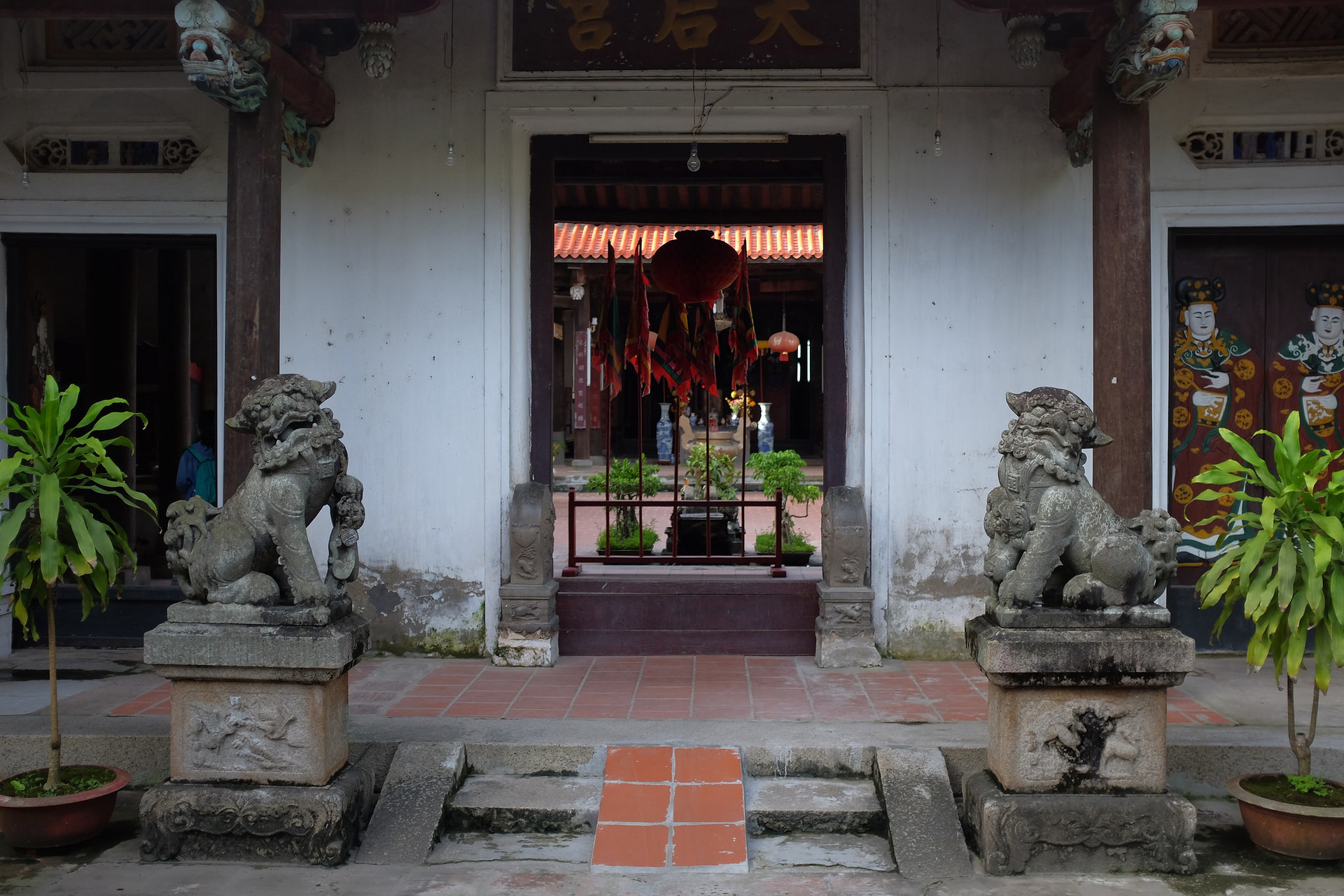
Thien Hau Temple (Heavenly City)
Then Minh Anh led me into an ancient temple, I thought that it was not Vietnam temple but kind of Japanese or Chinese Temple.
I asked Minh Anh again.
Minh Anh said.
Yes, that Chinese temple!
(I swear to Europeans that the temples in Asia are no different, but I am the one Vietnamese who can distinguish between Vietnamese architecture and Chinese architecture)
I went deep inside and read an introduction to the temple, built in 1640 by 14 Chinese families in Guangdong, Guangxi and Fujian, who donated money to build. Thien Hau Temple worshiped Ms. Lin Tux, according to "Dai Nam Nhat Thong", she is a sea god.
Lam Tuc Chang was born on 23 March (lunar calendar) is the sixth daughter of Lam Ngua, Bo Dien, Fujian Province (China). Legend has it that Lam Duc Khuc was born with a scent of perfume and aura. Tiffany was very smart, at the age of 8 years old to go to school, training into the main fruit, can call for rain, call the wind riding magic on the sea. When people lost the hunger season, she found seaweed instead of rice, noodles, and rice, so the people did not have hunger. She found a sprout oil, sprayed on soil to plant seeds for food instead of rice... On the 9th lunar month she was not sick that chemical. After chemistry she often wore red in the sea to help the ships pass. The Fujians claim her as Marhaba, where there are Fujian people, where there are temples. When migrating to Pho Hien, the Fujian people set up her temple on Bac Hoa Street (now Trung Trac Street).
This is the first time that I have ever seen a Chinese-style building on many subjects such as the gates, the incense burner, the roof, the dangle and the truss structure. Legend has it that the temple was made in China before being taken to Pho Hien
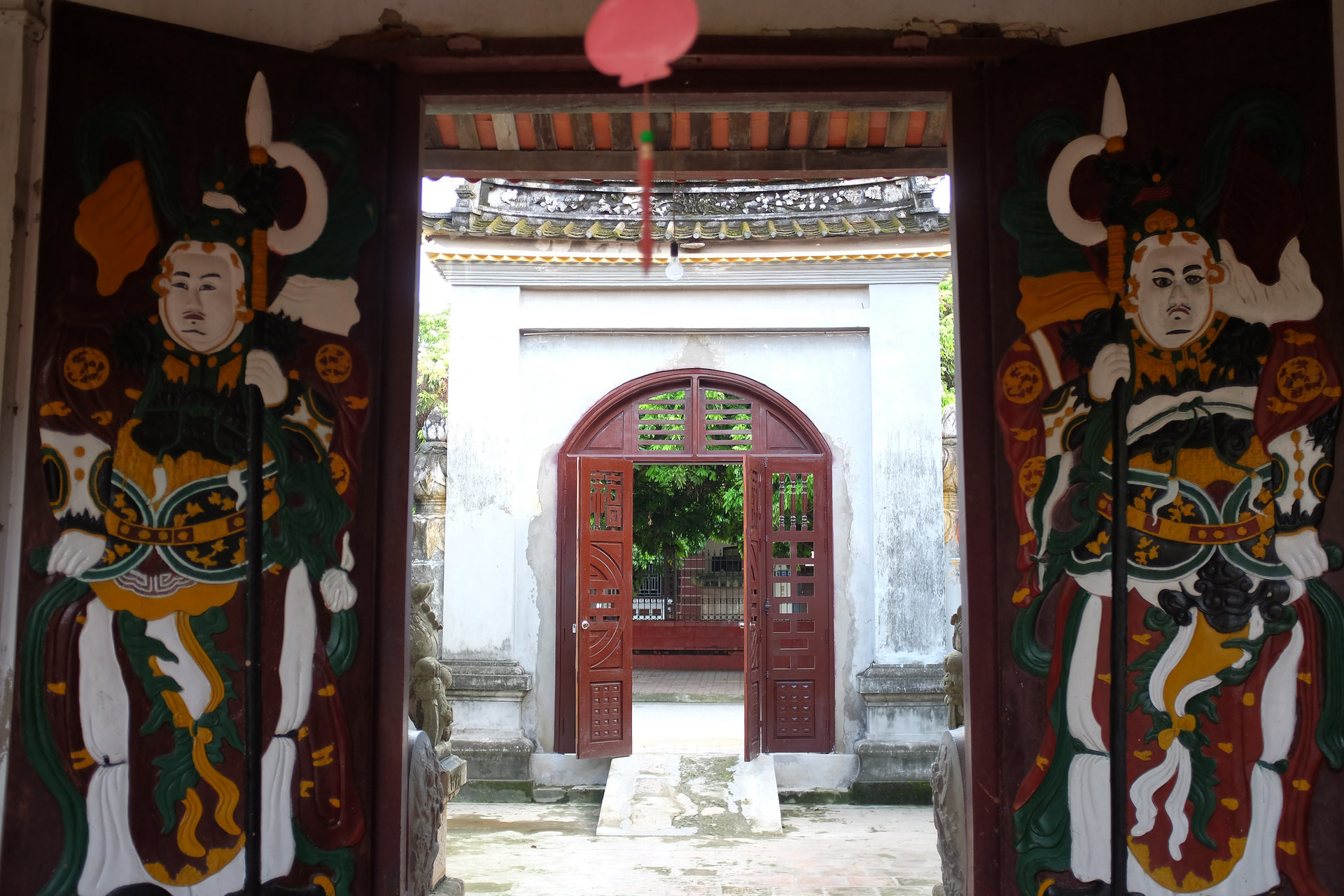
Looking closely, I saw the gate of the psychiatrist set up like a house, roofed tile roof, the architecture of the husbandry style, the door system carved the shape of the martial arts and followers. The platform is covered with pebbles that have been through the rain for hundreds of years.
I noticed. In front of the curious couple: stoned males, nursing females, granite materials, lively creatures. The pearl is rounded, smooth, not knowing how one can put a male into the mouth.
Two stone workers speak up the concept of Chinese life: to be and to be the greatest happiness of life.
The built-in nail-style built-in incense burner and harem. The consecrated house built two matched floor with 8 roofs, roof tile roof, decorative roof edge of the Buddha sitting on the lotus, around the passage. The whole system is structured according to the particular shape with each theme and Chinese stories such as Three Kingdoms, Journey to the West... In addition, here also decorate the flowers, Four seasons: spring, summer, autumn, winter.
The back porch consists of three compartments, the "winged wing" architecture, on the distal ends carved into shape. Lunar Gifu outside worship Tense also worshiped her parents, siblings and other Chinese families have built the temple.
We visited the temple a bit late so we did not get inside, we had to take some pictures of the temple grounds and go back to another day.
Next to this temple, it was a small one called Vo Mieu
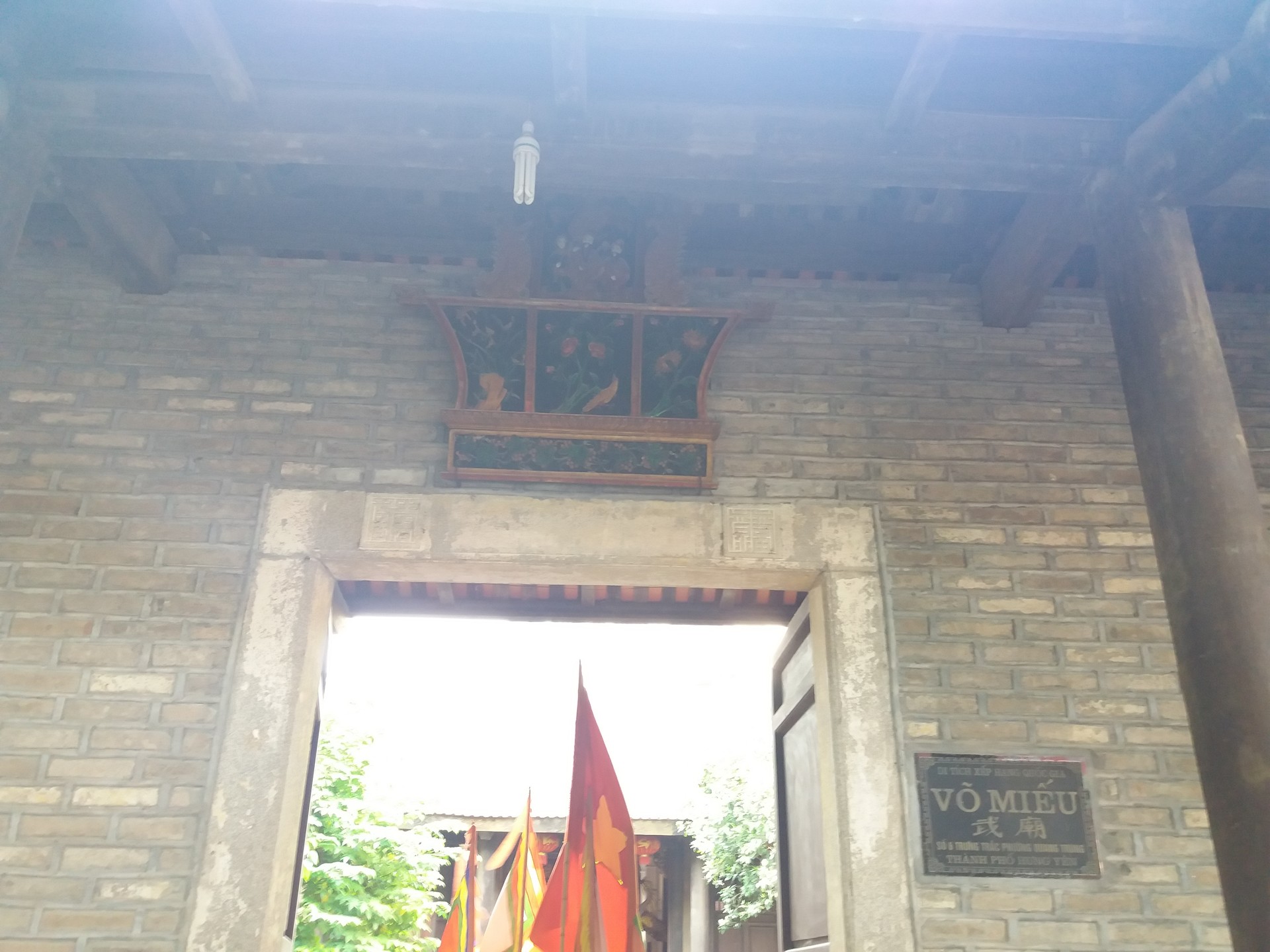
Vo Mieu was built during the Le Canh Hung period and restored many times during the Le dynasty and the Nguyen dynasty. Vo Mieu is a mixture of Vietnamese and Chinese architecture. The entire Vo Mieu relic site was built on the national style architecture includes the items: currency, medieval, harem and two ranges of the dance.
South side of the vestiges are the gate of the subject, special works are roof tile roof, the structure of the gong style double glaucoma, simple smooth, smooth plane. Outside the door, a carved image of Guan Yu and two generals were hung outside.
From the entrance, through the brick courtyard is the three ancient chapel restored during the reign of Thanh Thai 10th (1898). The roof tile roof tiles, supporting the roof is the column system is placed on the foot of stone decorated lotus pattern. The money is hanging the laughter of praise Cong Cong merit, that is:
Great old man
The virtue of the god shines as blue
Big love is heaven

Church of the Portuguese in Hung Yen

Hung Yen ancient town called Pho Hien is one of the important capitals of Son Nam, including the provinces of Ha Nam, Nam Dinh, Thai Binh and Hung Yen. Thus, Pho Hien is not only a political and economic center but also a gathering place for cultures and spirituality. Today, these signs are still reflected through the architecture such as churches, temples, temples, shrines...
Hung Yen Temple (Pho Hien) still retains the look and lines of the Portuguese.
My first impression was that I was surprised that the church was so beautiful, especially it looked like a church in Lisboa that I visited called Nossa Senhora da Conceição Velha.
I say again from the time Pho Hien prosper. By the mid-seventeenth century, the Missionaries followed the merchant ships of the Portuguese who landed at Pho Hien to enter the North of Vietnam. They set up a place to welcome and guide the missionaries after (the Nam Hoa family of Tien Chu, the precursor of Hung Yen).
An event worth noting is that in February 1670, the first council of the Vietnamese Church was held in Pho Hien under the presidency of Monsignor Lambert De La Motte.
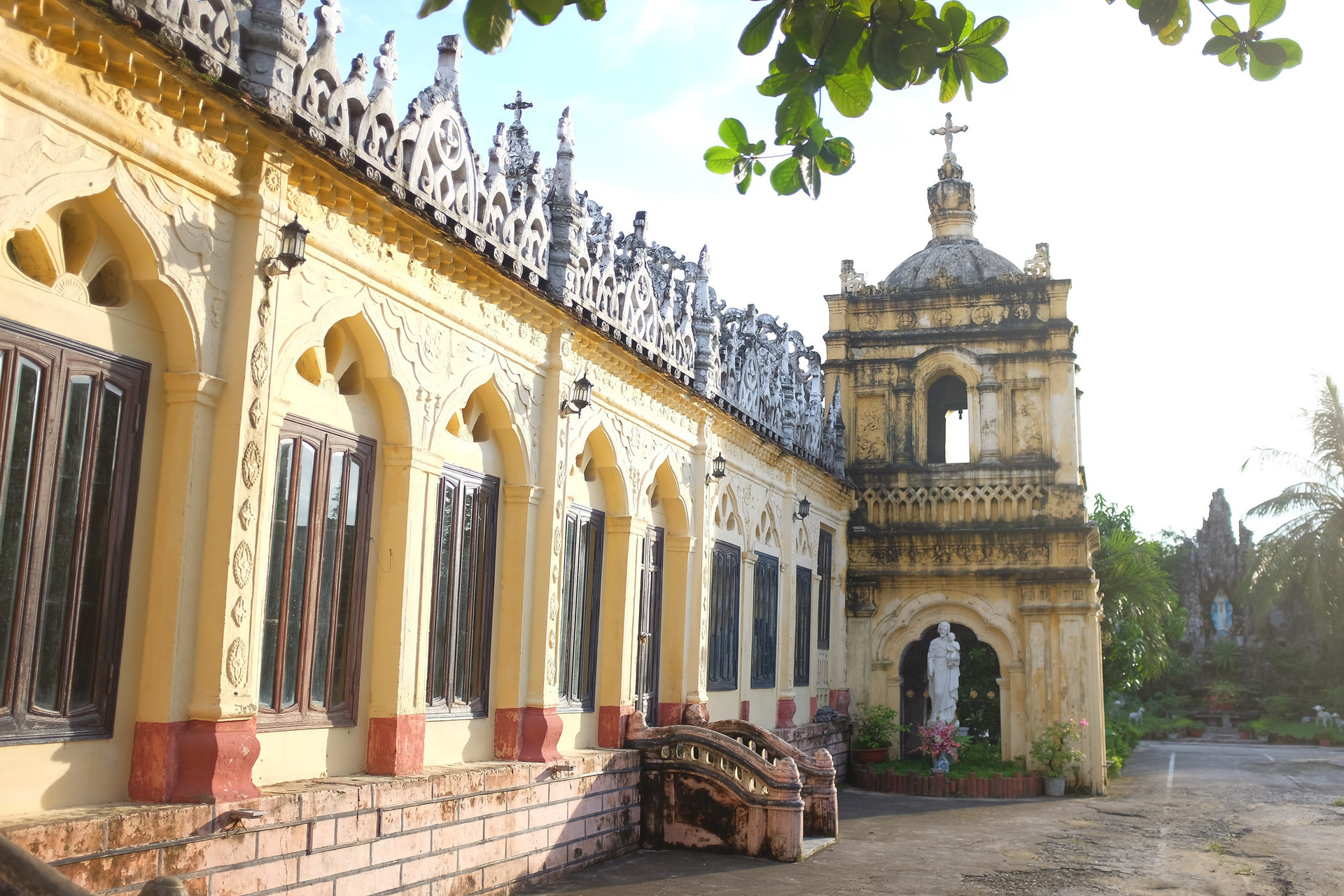
After 1918, Bishop Peter Munagorri Trung, Bishop of the Diocese of Central China, highly appreciated the Hung Yen family to the parish. In the period of banning the religion, since the province, Hung Yen has many captives. The village of Bai Trang (near the province) became the legal practice of many people arrested for martyrdom.
Hung Yen parish today is the home of St. Thomas Wu Tuc Khuong and St. Joseph Pham Van Tuc of the Hoang Xa family (the martyrs were St. Ngo Tuc Khuong of Tien Chu and Pham Van Tuc of Ngoc Dong ). Hung Yen also has 12 other martyrs.
Prior to 1954, the number of parishioners in the parish was 1360 people. However, due to the circumstances of the time, after 1954, most of the parishioners had migrated to the South. At present, the parishioners in the parish have 175 names. In addition, the friars here for many years away from the owner of the sheep, the life of the director encountered many challenges, arduous.
I looked on the outside and the front of the church was imitated in the Gothic style of Gotich, a three-lobed arch, usually feeling very similar to the churches on Europe.
I looked into the inside of the woodwork is engraved and three-lobed arch triangular as the outside, but there are guys and leopards, in the epigraphs are carved figure, dragon-style ant Ancient architecture of the Vietnamese. The church did not have a patio but walls, windows and doors. The columns and columns are made of wood, of equal magnitude.
The architecture of the church is made of wood, which has created the style of the church in the west and has a very sculptural architecture in Vietnam.
Legend has it that the church was built by the Portuguese when they began their missionary work here. This is the entrance and the place of the clergy, foreigners and local followers.
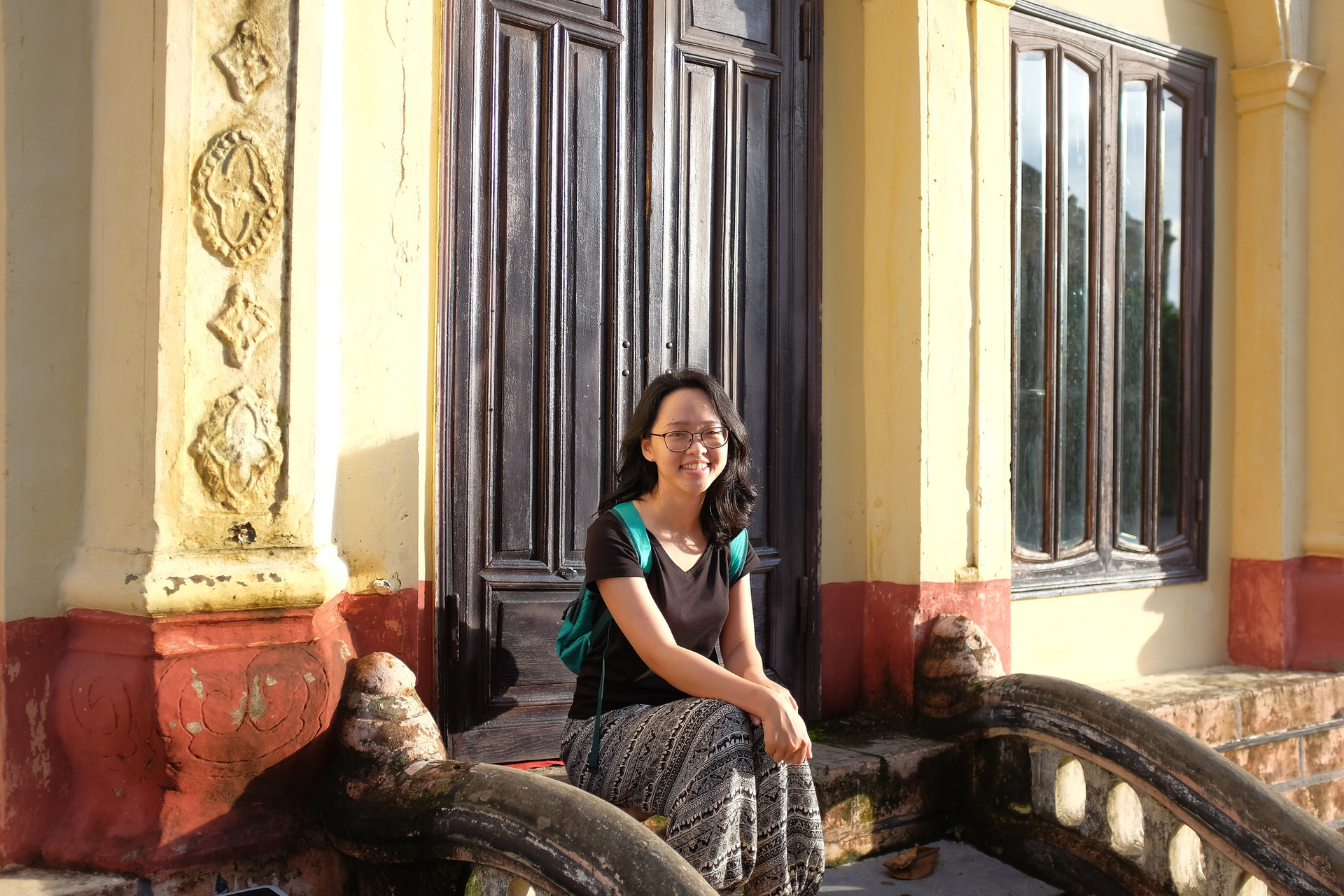
take a beautiful photo of my girl friend with the church
I have to admit that I do not expect to meet a Portuguese Architecture in Vietnam
Hung Yen lotus lake
The ancient lake was an international trade center in Hung Yen.
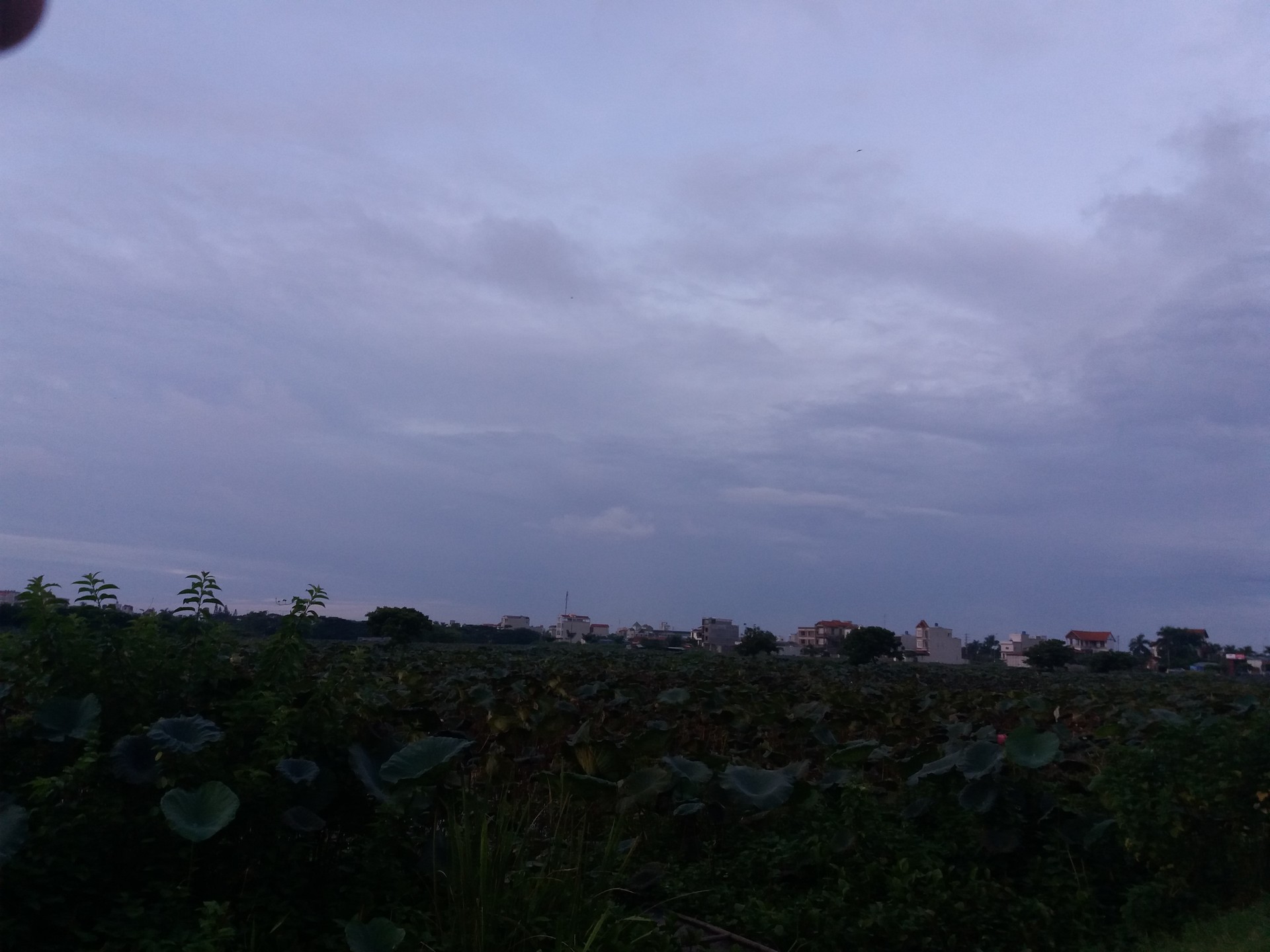
As I mentioned Hung Yen was an important trading port in Asia, many foreigners came to Hung Yen to do business in the UK, the Netherlands, the Portuguese and the Chinese, the Japanese.
Example, sailing all over the globe to Cochinchine in 1688, the British navigator William Dampier was the most vivid witness to the foreign trade that was so crowded in Pho Hien.
In your memoirs, I would like to point this out: "There are not many British traders, peacefully located in the north of the city and facing the river. This is a low-key, beautiful house and the most beautiful house I have seen in the city. In the middle there is a nice dining room and on the sides are comfortable rooms for businessmen, traders and servants of the company. The house is built parallel to the river, at each end. There are smaller houses with different uses such as kitchens, warehouses... standing in a long line from the main house to the river. "Dampier was keen to spot British, Dutch, Located on the banks of the river for easy transport of goods up and down the ships, whether it is in Hoi An near the sea or Pho Hien in the Red River. Before entering the Ke Go, the British put the trade in Pho Hien, Hung Yen with the director is William Gyfford and the board of five people. Actually, he was present in Vietnam very early, but Peacock merchant did not succeed in traveling from Hirado (Japan) to Hoi An in 1613 because of conflict with local people.
However, for the Netherlands, the Dutch are the old merchants!
Coming to the French for many years, the Dutch trade was originally in Pho Hien. This is the most prominent European-style building and always busy Dutch merchant ships. Wanting to replace the trade role of Japan when they returned to the sun-block trade ban on the ocean, January 31, 1637, people Holland on board the Grol carrying many European, Japanese and other metals that the country then needed such as copper, silver, iron... Especially, when the "transit" of Taipei, this merchant ships Adding two cannons to the West as a gift to the Dang Ngo court was a constant civil war against the Nguyen kingdom in Cochinchina. The Dutch East India Company reported that, in 1637, Captain Karel Hartsinck the first manager of the 13 Dutch commercial directors in Tonkin to 1700. After that, the trade was built at Ke Go, but still kept Pho Hien made a detailed housing is nhanh. Day special favor of Lord Trinh for the Netherlands. In his memoirs, Dampier also recorded a Dutch trade built south of the English building. In its heyday, mariners and Dutch traders were successful throughout the world and also reaped similarly. in Tonkin Vietnam. In addition to buying silk, musk, porcelain, spices... of the North for export, the Netherlands also won the right to import monetary metal for Lord Trinh, especially silver and Zeni money.
Japan ancient international port in Hung Yen!
Yet you imagine that the busy bouquet is now a lotus lake, as recorded in history, with the alluvium of the Red River, foreign boats can not access Hung Yen It's easy, and so they gradually leave.
Oh! Hung Yen, international commercial port for a time just a lotus lake!

I see the lotus in Hung Yen is not big, the darker pink is not the same as in the Plain of Reeds.
However, I think that between the differences, Hung Yen looks more healthy and energetic. Prior to the favor that nature has given the land of Hung Yen, stretching themselves in front of vast immense lagoon, proudly blooming and blossomed with pure incense.
Although born in mud, the lotus is not contaminated with turbid water but has the potential to alter the living situation. Although the water is chiselled to a few that live sen, the water there will be very clean and clear. The lotus also symbolizes the noble, indomitable nature of the soldier, holding fast to the temptation of fame, keeping himself clean even in the middle of the mud.
With the characteristics of soil and climate, Hung Yen lotus seeds are evaluated as aromatic, delicious and nutritious than lotus seeds grown in other regions, which are favored and priced higher than other lotus seeds. ( In Vietnam, we do eat lotus seeds)
I also hope that one day the city will grow richer and become a thriving commercial port as its golden age.
Photo gallery
Content available in other languages
- Español: Hung Yen
Want to have your own Erasmus blog?
If you are experiencing living abroad, you're an avid traveller or want to promote the city where you live... create your own blog and share your adventures!
I want to create my Erasmus blog! →



















Comments (0 comments)